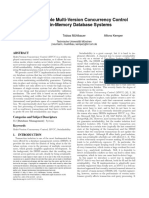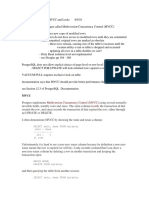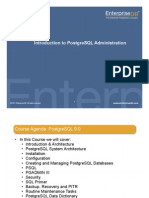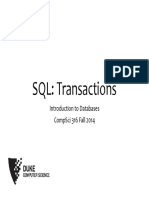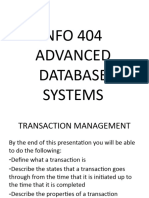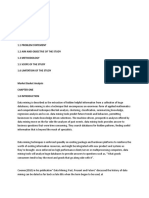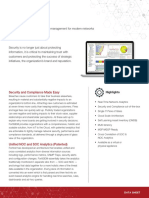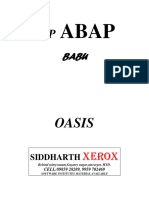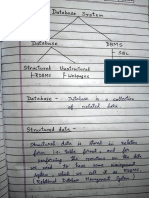0% found this document useful (0 votes)
77 views2 pagesMulti-Version Concurrency Control (MVCC) in PostgreSQL
Multi-Version Concurrency Control (MVCC) in PostgreSQL allows multiple transactions to occur concurrently while maintaining data consistency and isolation by keeping multiple versions of data records. It offers advantages such as improved concurrency, non-blocking reads, and snapshot isolation, but also has disadvantages including storage overhead, the need for vacuuming, and increased complexity. Proper management of MVCC is essential for optimizing performance in PostgreSQL applications, especially in write-heavy environments.
Uploaded by
Vignesh MCopyright
© © All Rights Reserved
We take content rights seriously. If you suspect this is your content, claim it here.
Available Formats
Download as PDF, TXT or read online on Scribd
0% found this document useful (0 votes)
77 views2 pagesMulti-Version Concurrency Control (MVCC) in PostgreSQL
Multi-Version Concurrency Control (MVCC) in PostgreSQL allows multiple transactions to occur concurrently while maintaining data consistency and isolation by keeping multiple versions of data records. It offers advantages such as improved concurrency, non-blocking reads, and snapshot isolation, but also has disadvantages including storage overhead, the need for vacuuming, and increased complexity. Proper management of MVCC is essential for optimizing performance in PostgreSQL applications, especially in write-heavy environments.
Uploaded by
Vignesh MCopyright
© © All Rights Reserved
We take content rights seriously. If you suspect this is your content, claim it here.
Available Formats
Download as PDF, TXT or read online on Scribd
/ 2







